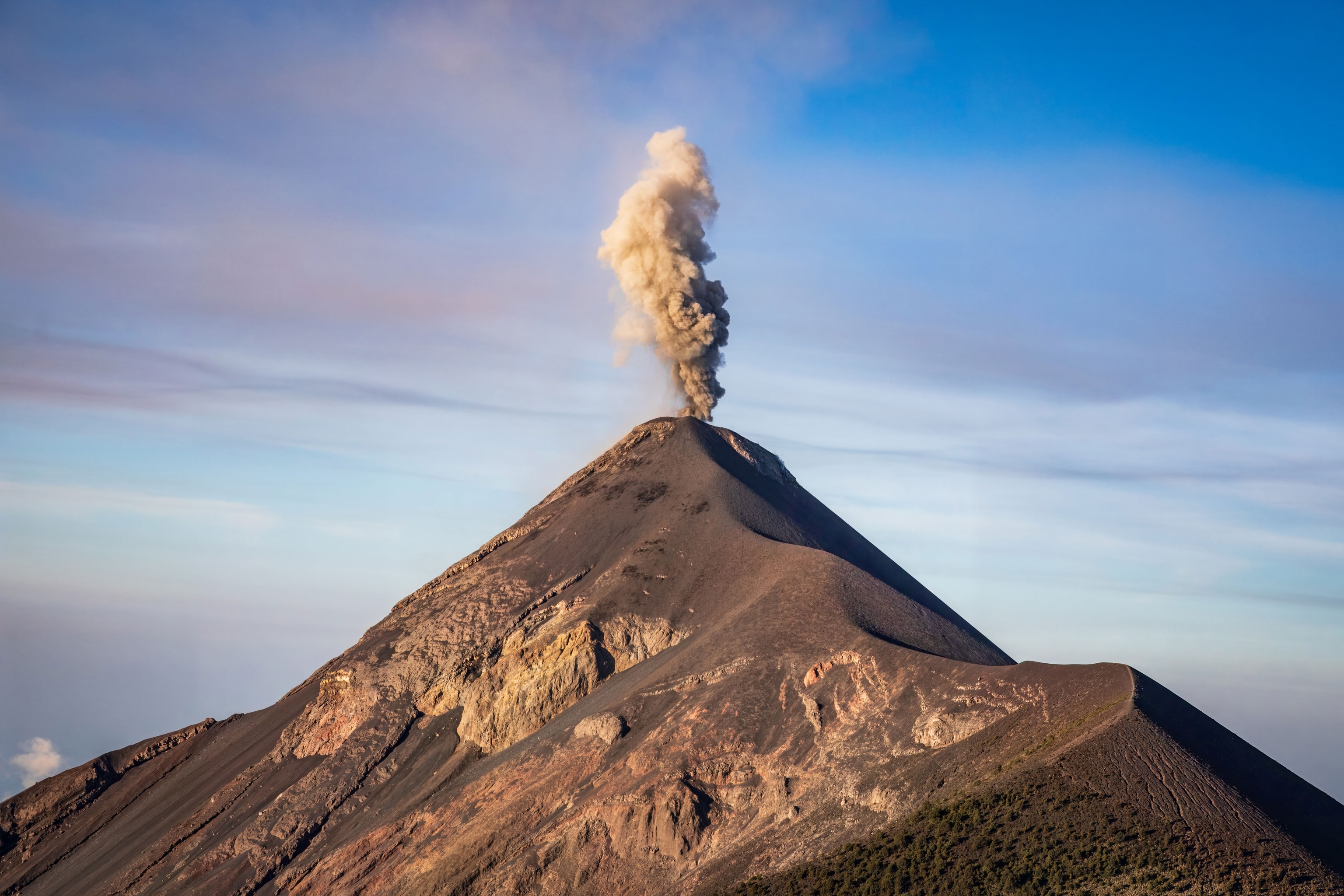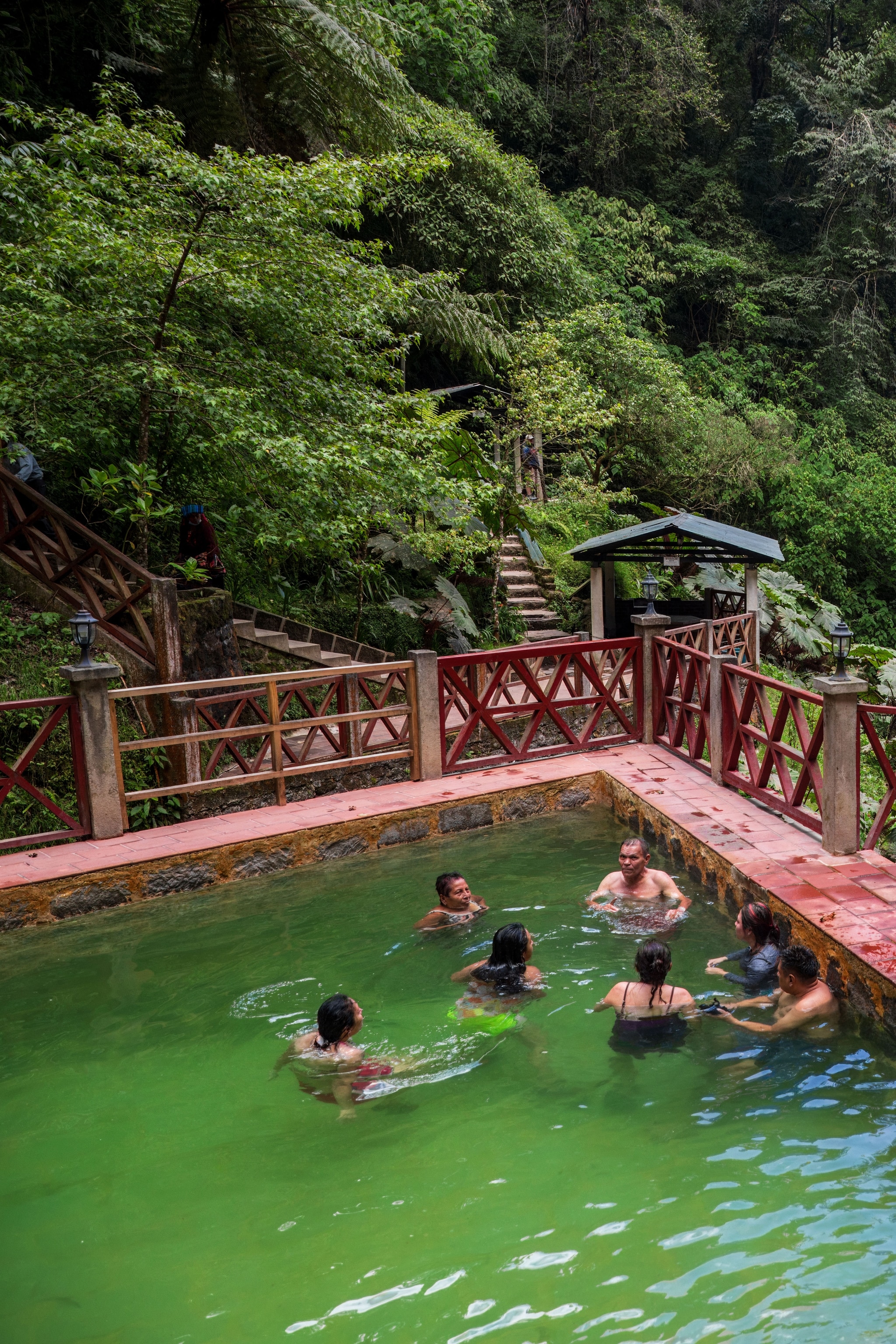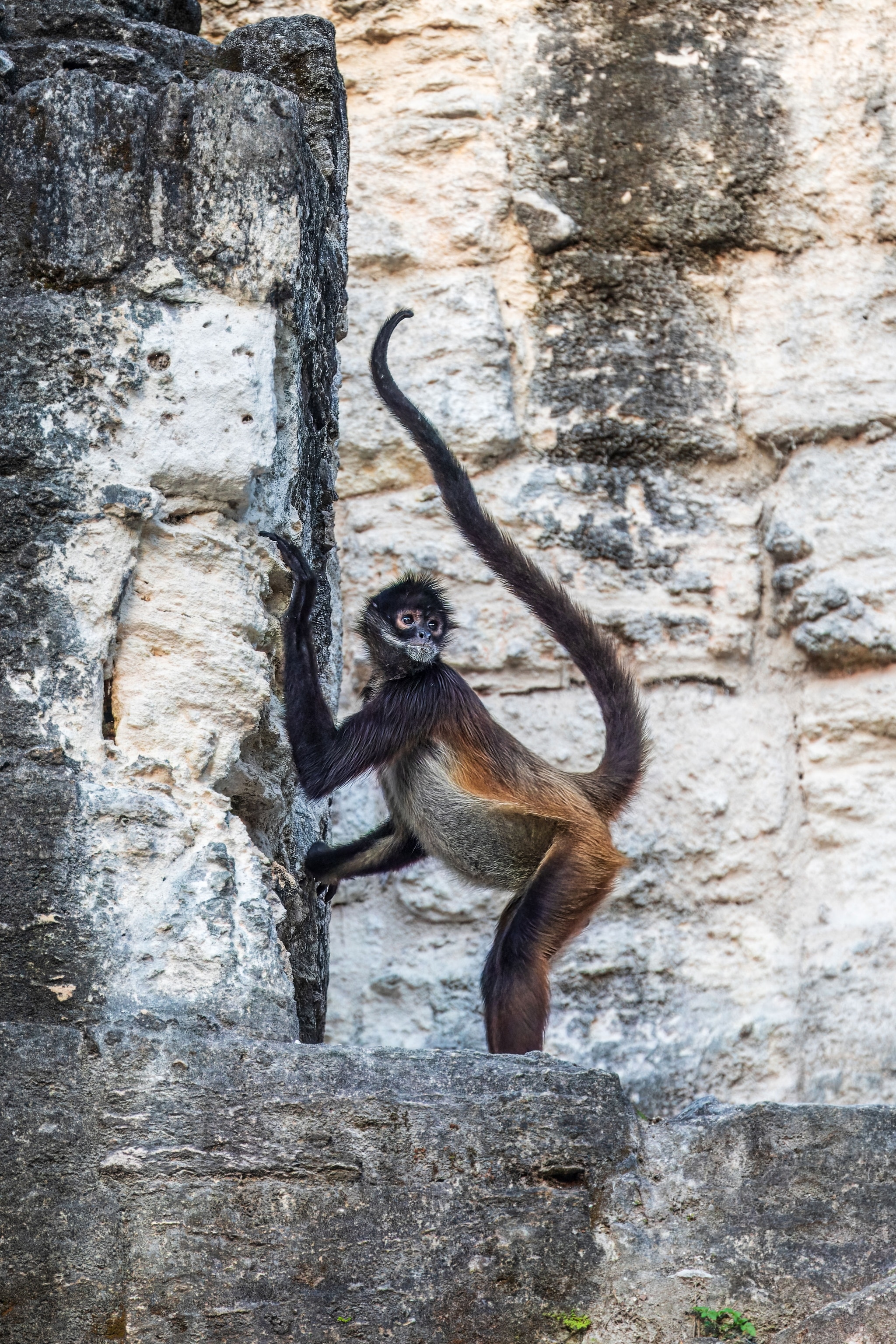Guatemala squeezes a continent’s worth of nature into a compact country. The landscape shifts dramatically between its borders, from active volcanoes to lowland rainforest, and from black-sand beaches pounded by Pacific swells to natural pools as turquoise as they’re tranquil. For travellers with energy to spare, no two days need look the same.
1. Witness eruptions at Volcán de Fuego
Earth puts on an incandescent live show in Guatemala, a country with 37 volcanoes, three of which are active. Options for exploring this geotourism hotspot include everything from moderate hikes to lava fields and crater lakes, to challenging multi-day adventures up Central America’s highest peaks.
The headline act is Volcán de Fuego, a 12,362ft cone of heat and fury that hurls lava and ash into the sky sometimes as frequently as every 15 minutes. The best way to witness this spectacular sight is with a guided overnight excursion to 13,044ft Acatenango Volcano, its next-door neighbour, departing from Antigua Guatemala. A four-hour hike takes visitors up Acatenango, and campsites are set up with views towards Fuego, less than two miles away. When darkness falls, the show ramps up.
2. Swim in natural pools at Semuc Champey
Water and time have sculpted one of Guatemala’s most fascinating geological formations at Semuc Champey. Lost in the forests of Alta Verapaz, a department in the country’s north, are terraced pools in shades of turquoise and jade, each overflowing into the next in a series of gentle waterfalls. They’re part of a 984-foot-long limestone bridge over the River Cahabón, which dives into a tunnel and resurfaces further downstream.
To fully appreciate the beauty of this natural monument, a quarter-mile hike branches off from the main path down to the pools, before heading uphill to a viewpoint. Then, cool off by easing yourself into Semuc Champey’s crystalline waters. The shallower pools are perfect for lounging, while others are deep enough for swimming among tiny, silvery fish.
The natural pools of Semuc Champey flow into each other in a series of gentle waterfalls.
Photograph by Bella Falk

Volcán de Fuego, one of the most active in the world, erupts as often as every 15 minutes.
Photograph by Bella Falk
3. Spot an avian icon at Biotopo del Quetzal
Few countries lay claim to a more impressive national bird than Guatemala. The clue’s in the name: the resplendent quetzal looks every bit the part, with emerald plumage, a scarlet breast and metre-long twin tail feathers that trail behind it like a gymnast’s ribbons. Its beauty made it sacred to the Maya, and today, it gives its name to the local currency.
Frustratingly shy for such an eye-catching creature, quetzals hide in remote cloud forests. One of the best places to try to spot one is the Biotopo Mario Dary Rivera (nicknamed Biotopo del Quetzal), a 1,000-hectare sanctuary in the highlands. Fern-fringed trails wind between cypress and avocado trees humming with birdlife — quetzals, plus slate-throated redstarts, rufous-collared robins and some 300 other species.
4. Take a boat trip down the Río Dulce
Livingston is a town so secluded on Guatemala’s eastern coast, it’s only accessible by boat, either up the sea or along the Río Dulce. The so-called ‘Sweet River’ meanders for 27 miles as it travels from Lake Izabal to Livingston on the Caribbean Sea. More than just a mode of transport, the ride is an experience in itself.
As it journeys through the jungle, the waterway passes the Castillo de San Felipe, a 17th-century fort built to guard against pirates; the half-mile Río Dulce bridge, Central America’s longest; and wooden houses perched on stilts. Downstream, it carves through 295-foot limestone cliffs, their walls dripping with vines. As you reach Livingston, look out for the colourful houses around the port, and the fisherfolk sorting their catch on the sun-bleached jetty.
5. Go rainforest trekking in El Petén
The rainforest is never quiet. Take even a short walk in the northern Maya Biosphere Reserve, the largest tract of American tropical forest left north of the Amazon, and you’ll be serenaded by an orchestra of life, from the saxophone screech of macaws to the booming bass of howler monkeys. A lucky few may even spot a jaguar or puma, the ensemble’s elusive stars.
Many trails start at Tikal National Park, in the Petén department, from short outings to off-grid adventures. For a challenge, trek to the ruins of El Zotz (Maya for ‘bat’) a three-day trip. The reward is a temple-top viewpoint, which overlooks the canopy and is circled by clouds of the black flying mammals.

Locals relax in natural hot pools at Fuentes Georginas, which are heated by the country’s volcanic underbelly.
Photograph by Bella Falk

The rainfroest of El Petén is home to spider monkeys, as well as macaws, howler monkeys and even jaguars and pumas.
Photograph by Bella Falk
6. Soak in hot springs at Fuentes Georginas
Thanks to its volcanic underbelly, Guatemala has dozens of natural thermal springs. Among the most scenic is Fuentes Georginas, a complex of hot pools in the highlands near Quetzaltenango, the country’s second city. Here, mineral-rich waters bubble up in a series of steaming baths, surrounded by forest chattering with warblers and hummingbirds.
Locals have been visiting these therapeutic springs to soothe ailments like joint pain and skin conditions for centuries. If joining them, consider paying a little extra for access to the ‘secret pools’, more secluded and less developed. Wellness enthusiasts will find more opportunities to relax in Antigua, home to several luxury spas in converted convents or colonial-era homes, or Lake Atitlán, which has become a hub for yoga and holistic retreats.
7. Surf the waves in El Paredón
On Guatemala’s Pacific coast, El Paredón is carving out a name as Central America’s up-and-coming surfing destination. This rustic village has black sand beaches and waves that consistently average around six feet — perfect for seasoned surfers. For beginners, the strong currents and pounding breaks might be challenging, but nearby lodges offer surf or stand-up paddleboard lessons with local instructors, plus boards for hire.
Between sessions, sample fresh ceviche and mellow marimba music at beachside bars; enjoy sunset walks on the crowd-free shoreline; or kayak through the waterways of the nearby Sipacate-Naranjo Nature Reserve. Down the coast, around the village of Monterrico, ridley and leatherback turtles nest on the beach for a few months every year, with the peak in August and September.
8. Go underground in the Candelaria Caves
Hidden beneath Alta Verapaz, the Candelaria Caves are a limestone labyrinth extending almost 14 miles — one of the largest such systems in Central America. Carved over millennia by underground rivers, it’s a maze of tunnels and chambers, dripping stalactites and gnarled rock formations, its darkness broken only occasionally by shafts of sunlight through a collapsed ceiling.
Pottery found inside show the caves were used by the Maya, who believed them to be an entrance to Xibalbá, the Underworld. Today, their descendants still come to perform ceremonies and prayers. Visitors are also welcome to explore, heading on torchlit tours, going tubing on the sacred underground river, or taking a boat to visit the ‘Sala de Xibalbá’, an ancient ceremonial cavern.
This paid content article was created for Guatemalan Institute of Tourism. It does not necessarily reflect the views of National Geographic, National Geographic Traveller (UK) or their editorial staffs.
To subscribe to National Geographic Traveller (UK) magazine click here. (Available in select countries only).
Source link : http://www.bing.com/news/apiclick.aspx?ref=FexRss&aid=&tid=67b7749c4eb64be9859daf24c2378b43&url=https%3A%2F%2Fwww.nationalgeographic.com%2Ftravel%2Farticle%2Fpaid-content-8-best-outdoor-experiences-guatemala&c=7186495800590894177&mkt=en-us
Author :
Publish date : 2025-02-20 05:01:00
Copyright for syndicated content belongs to the linked Source.





